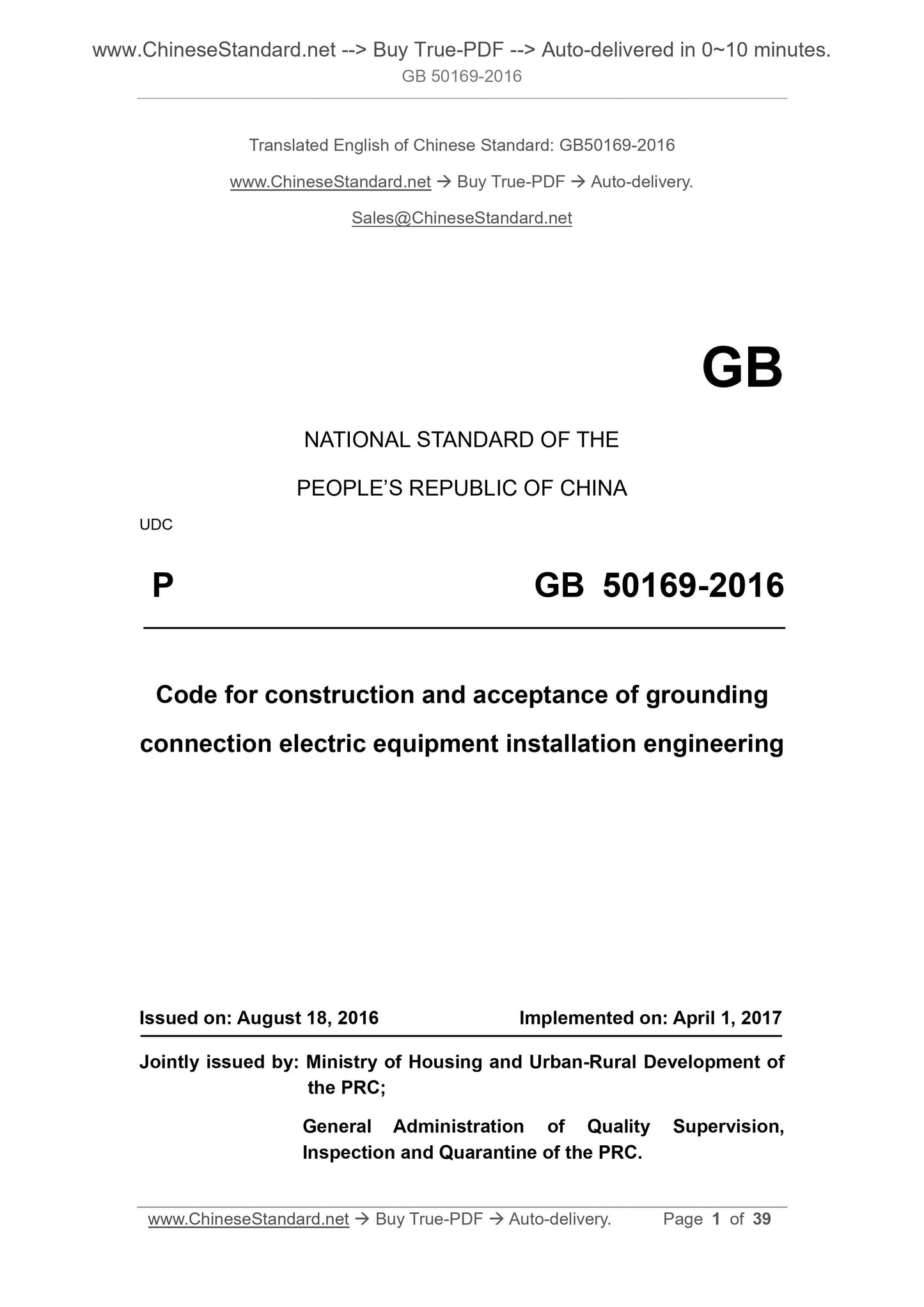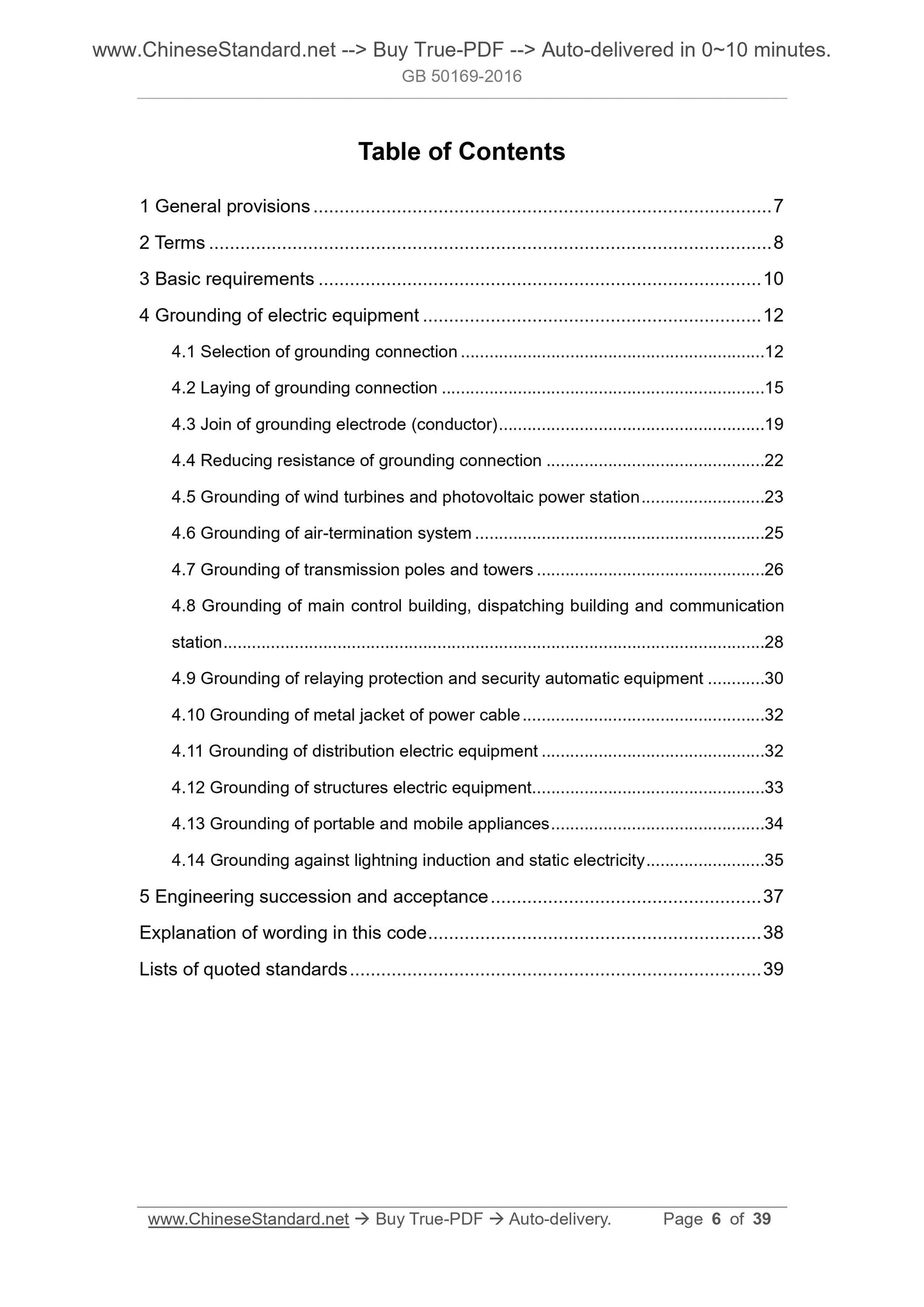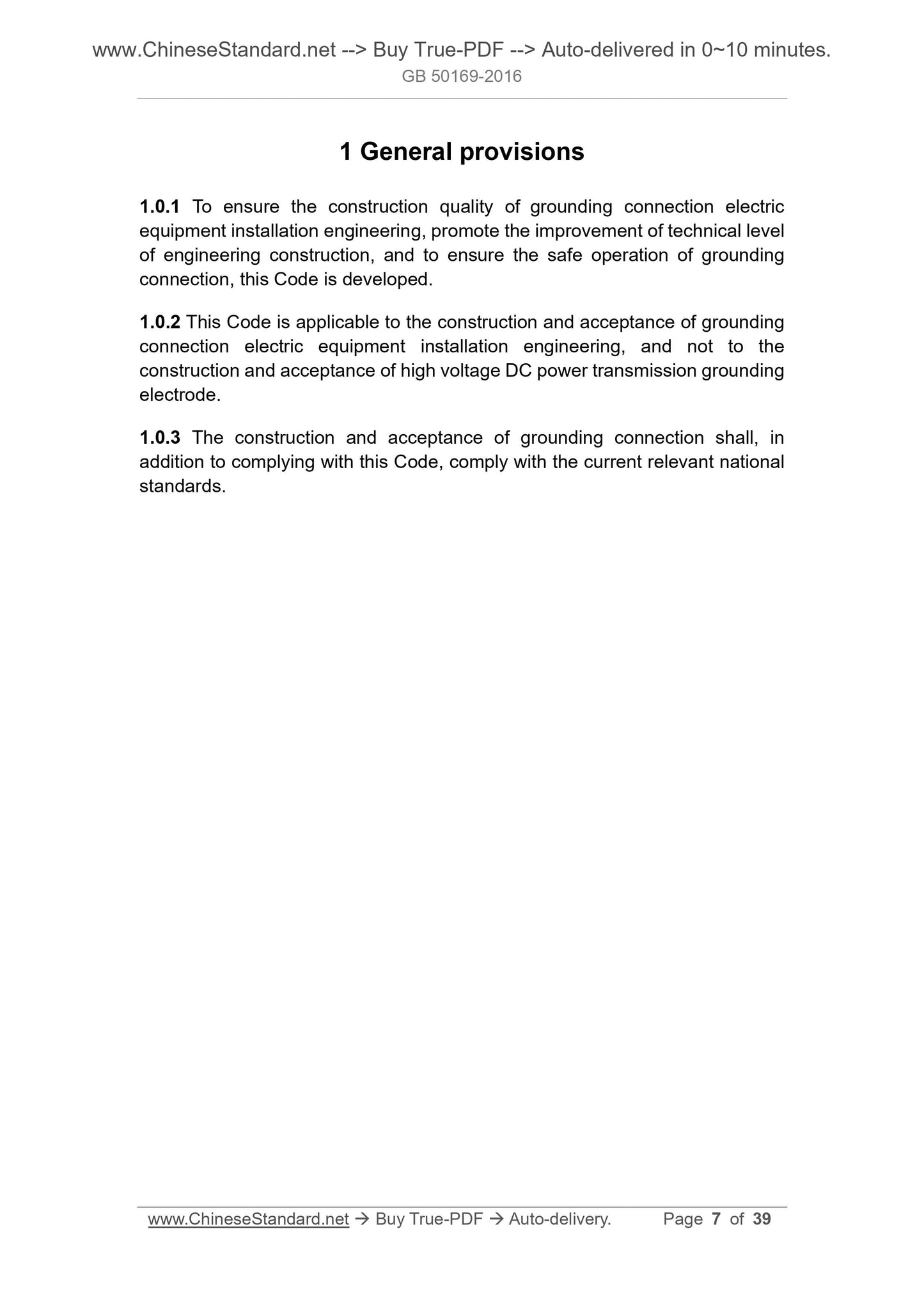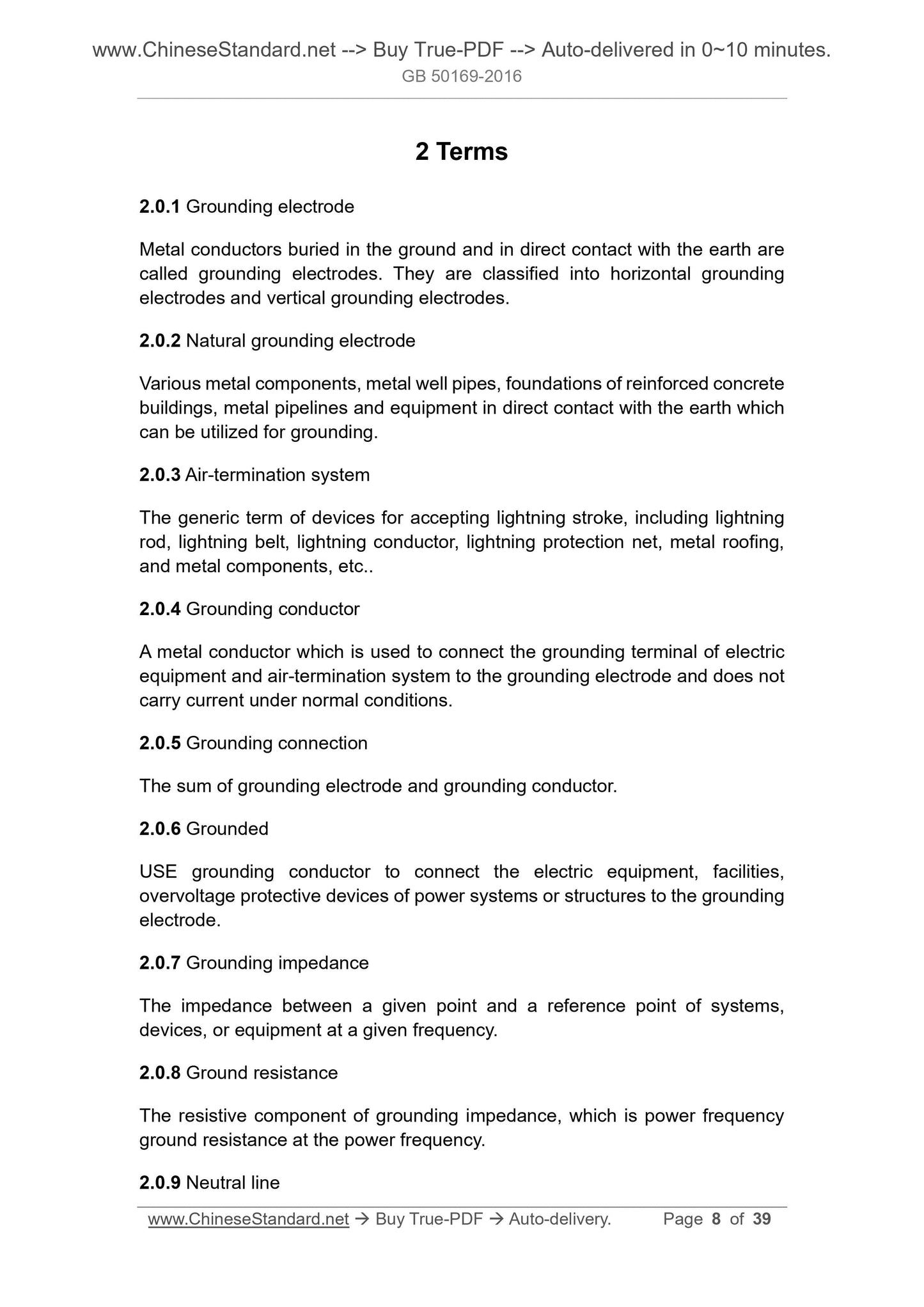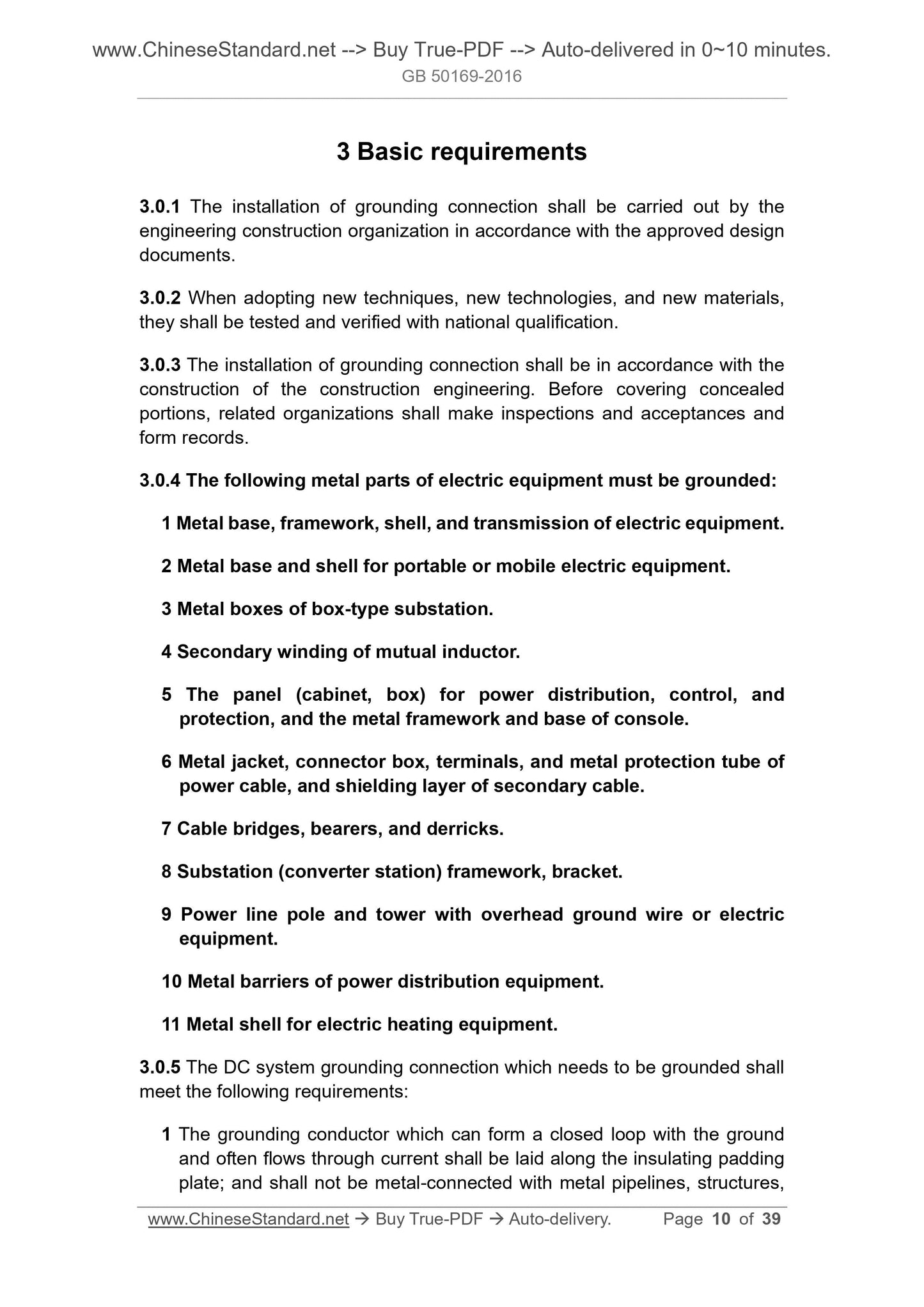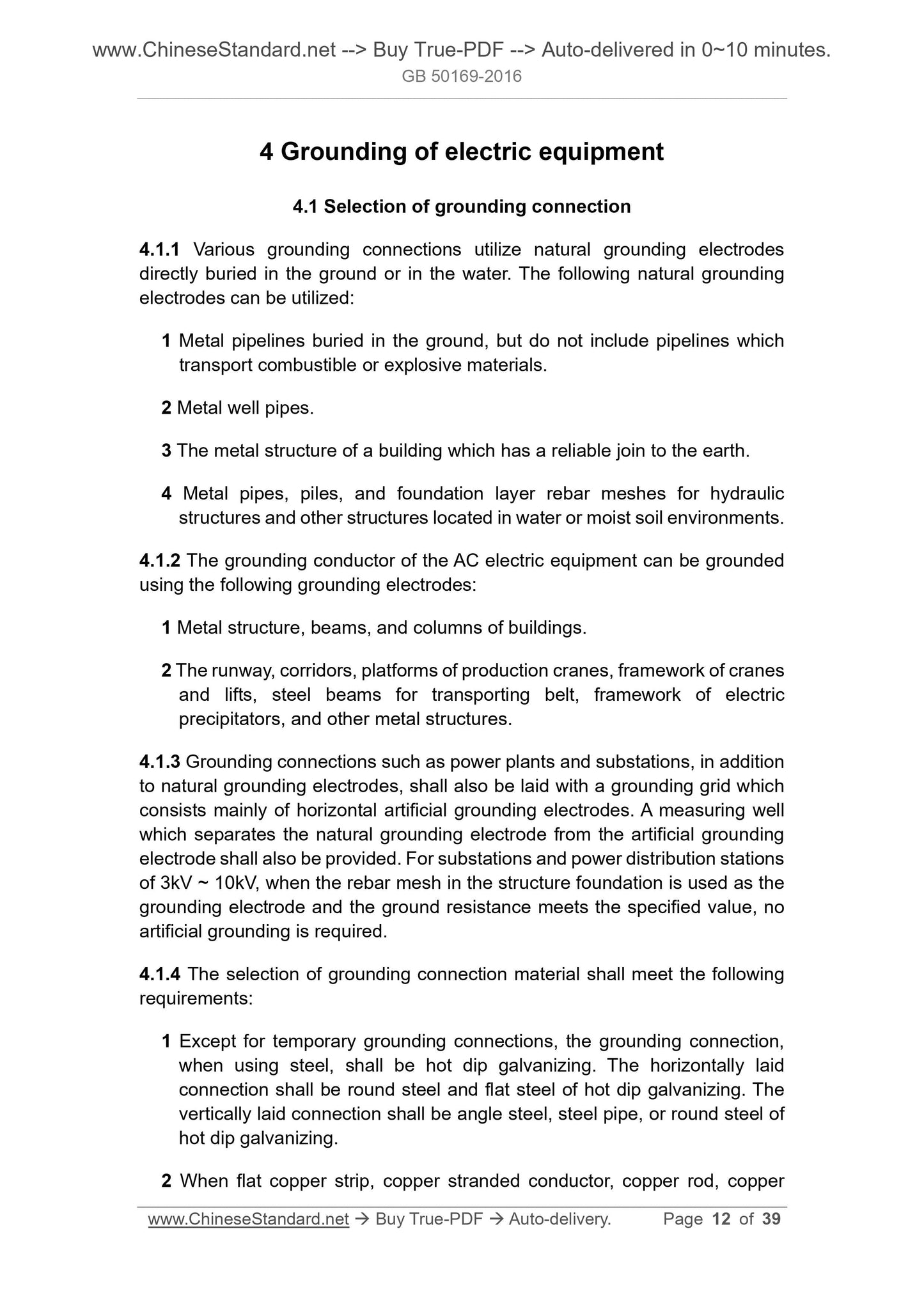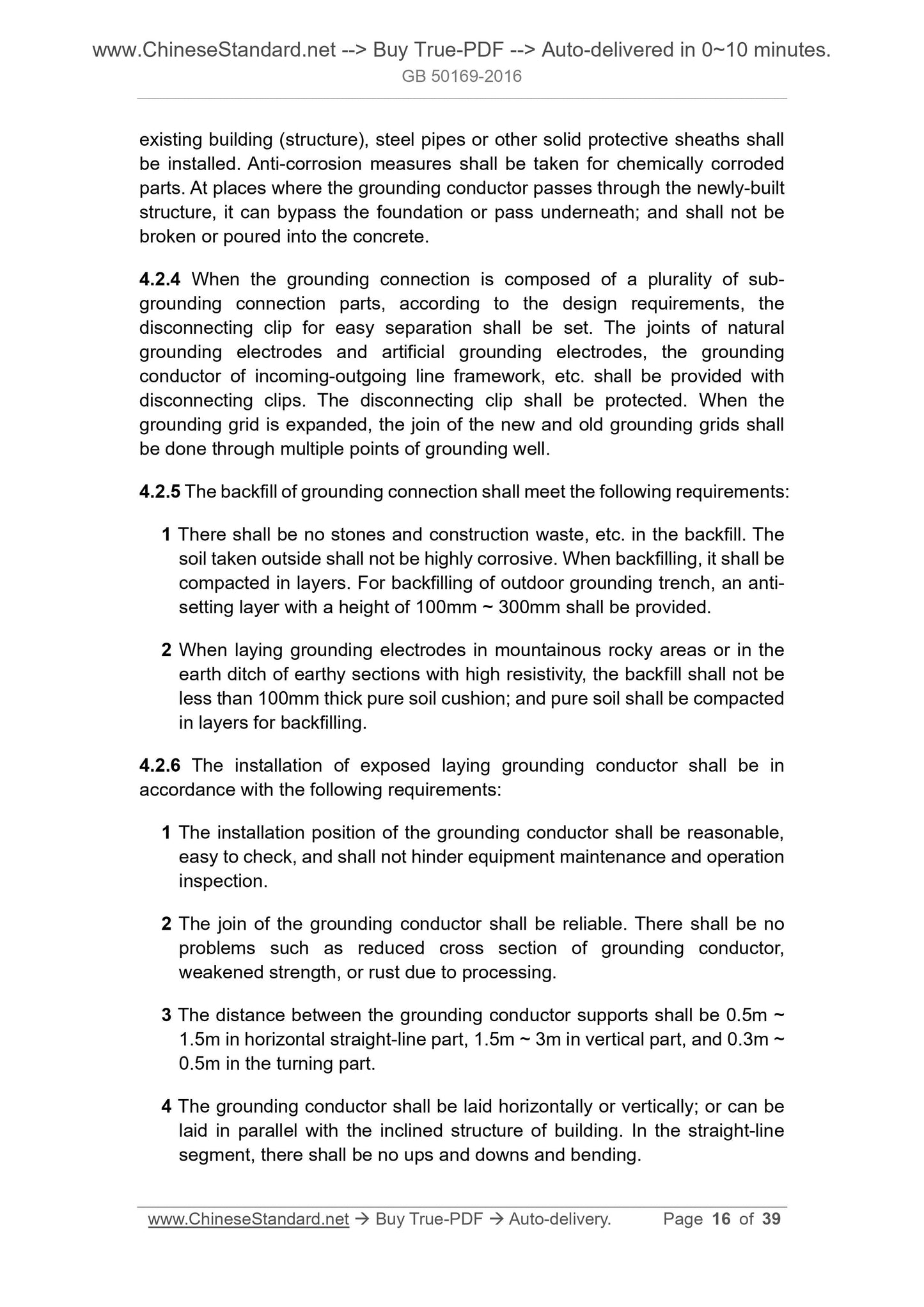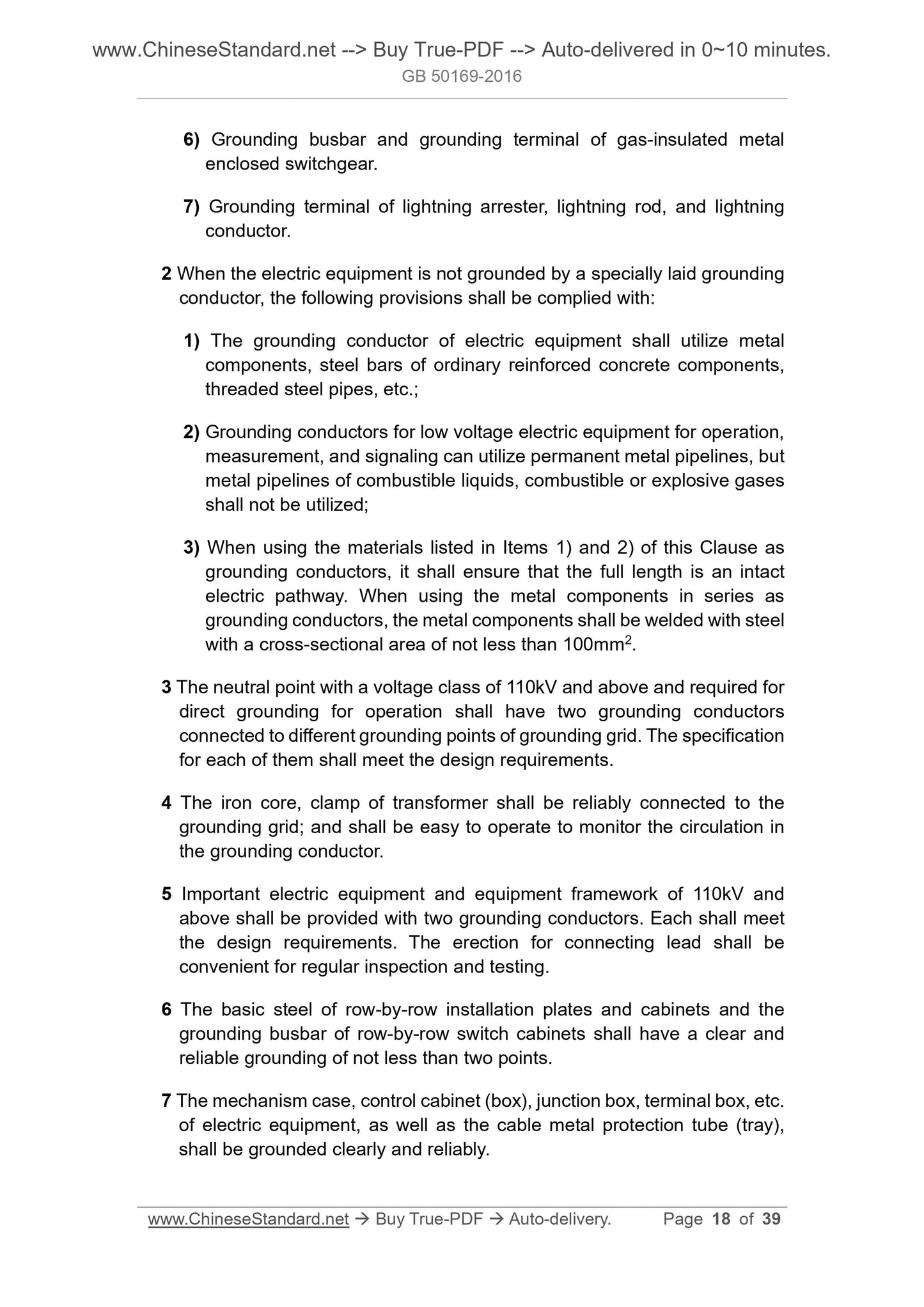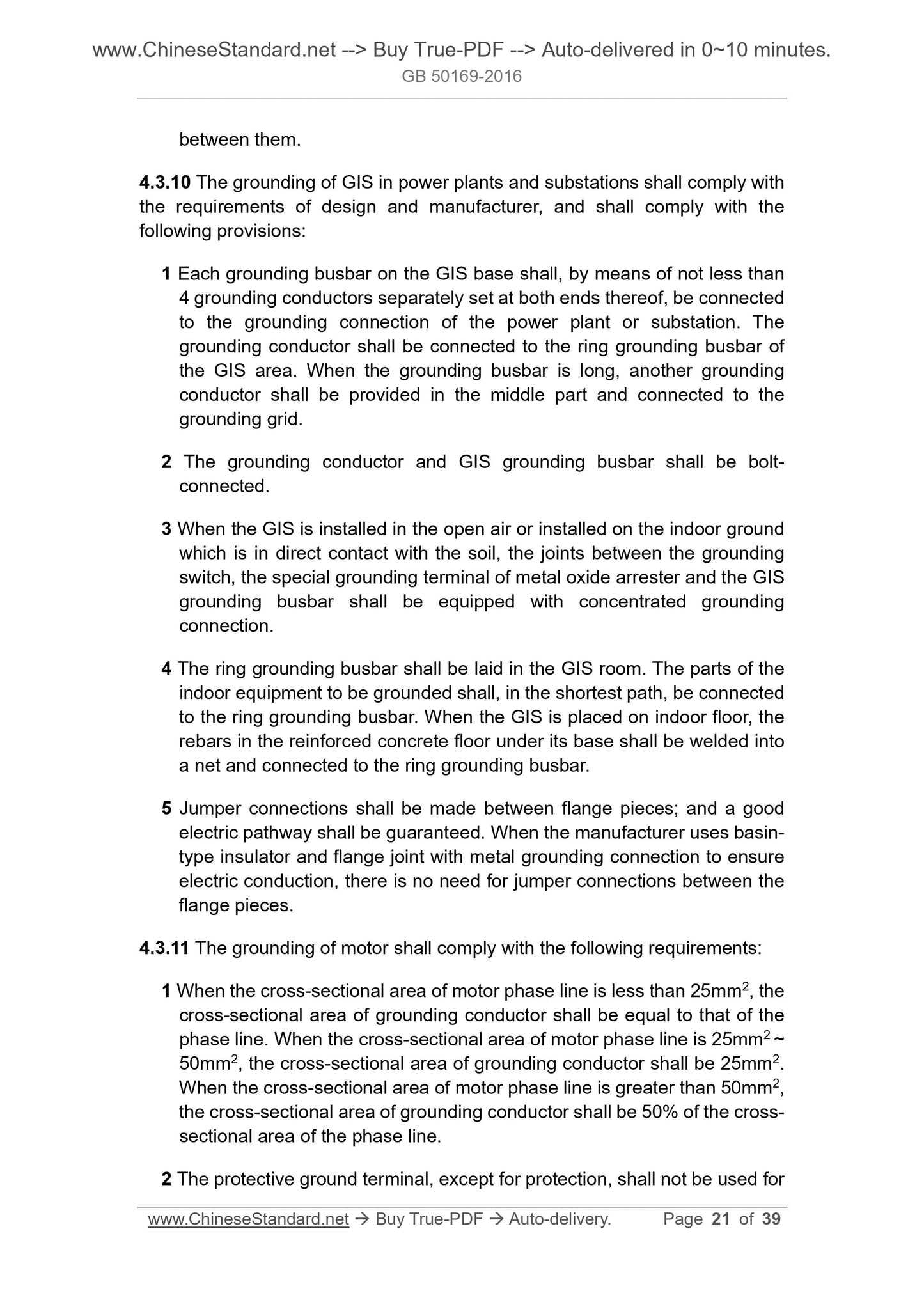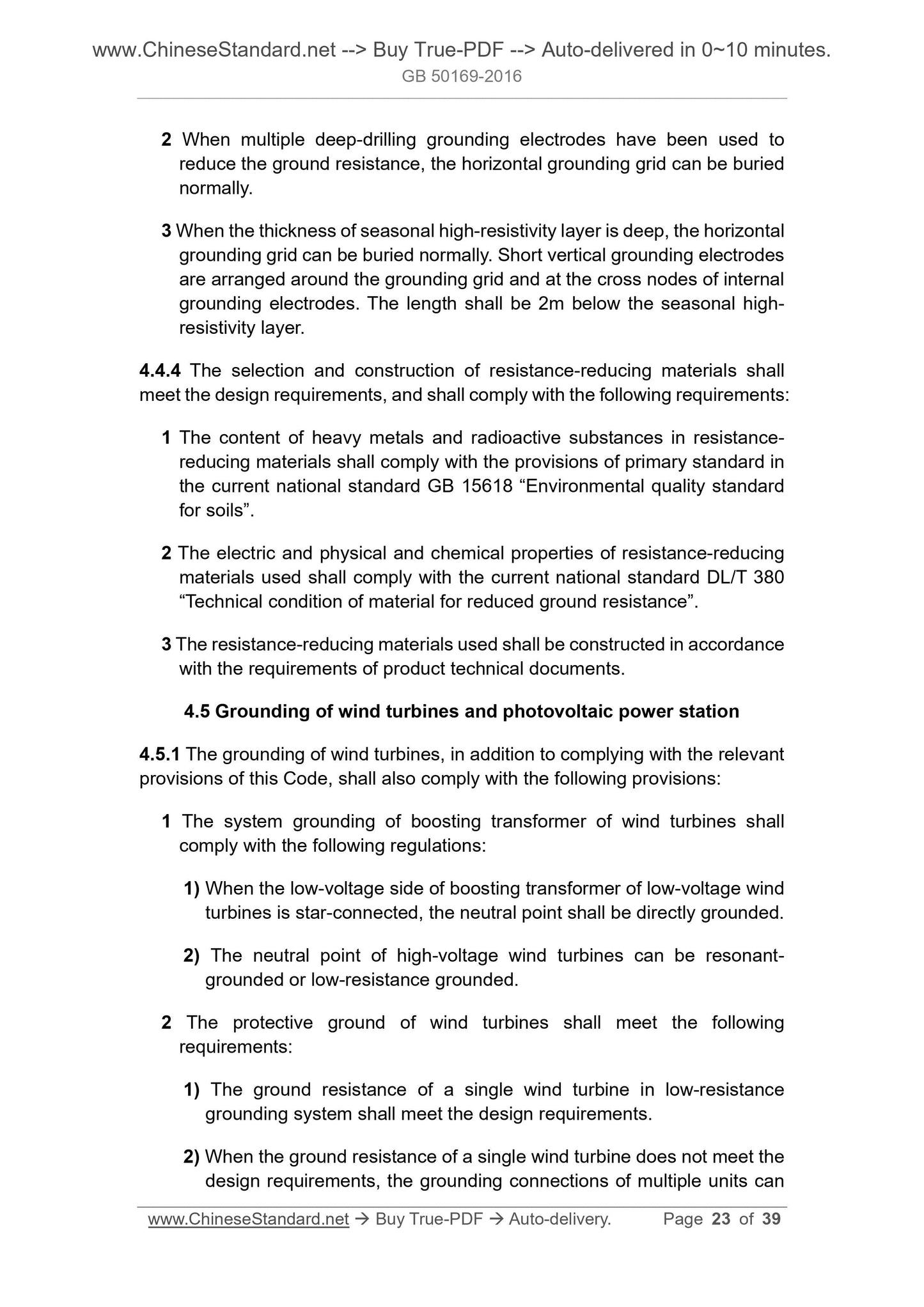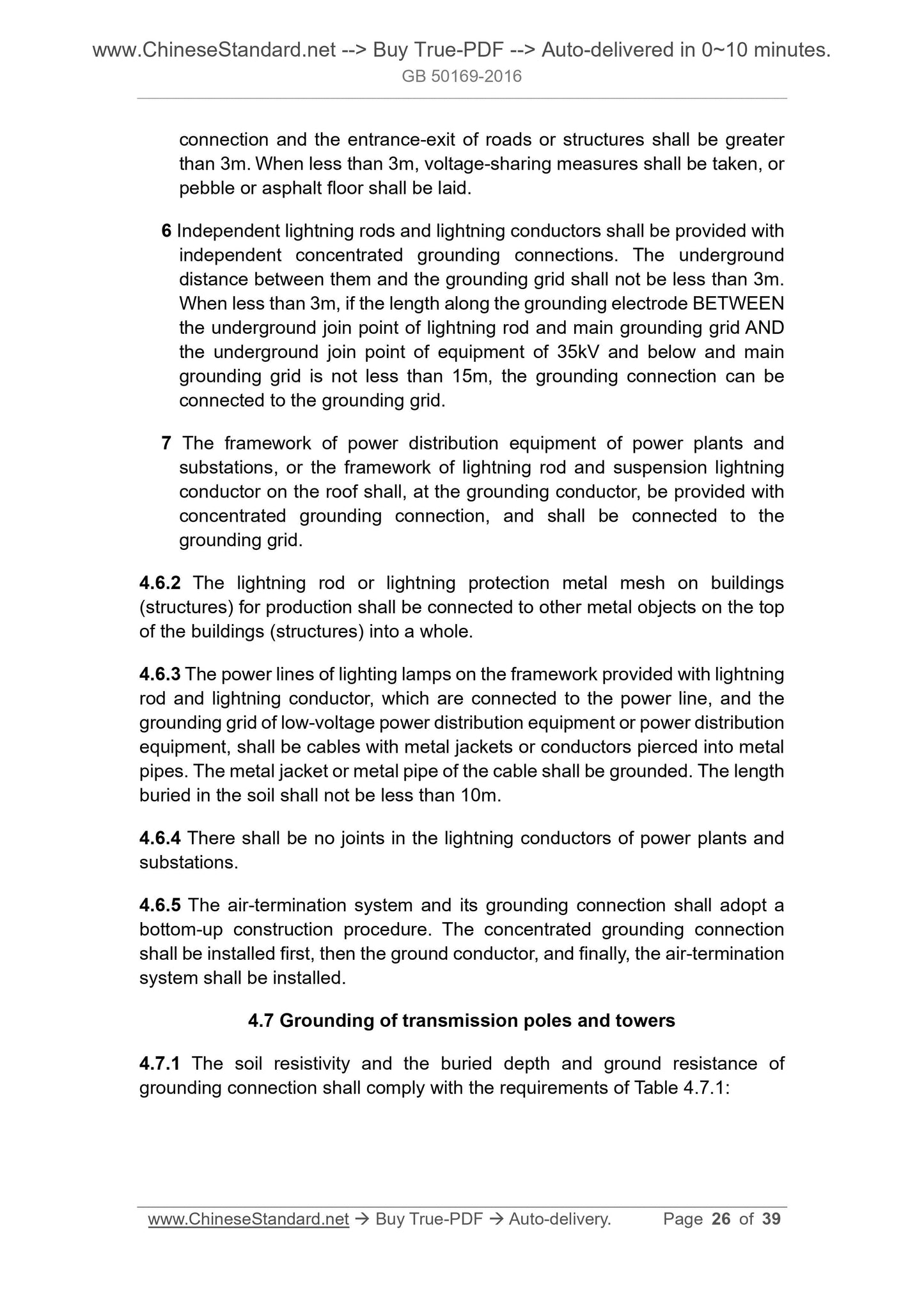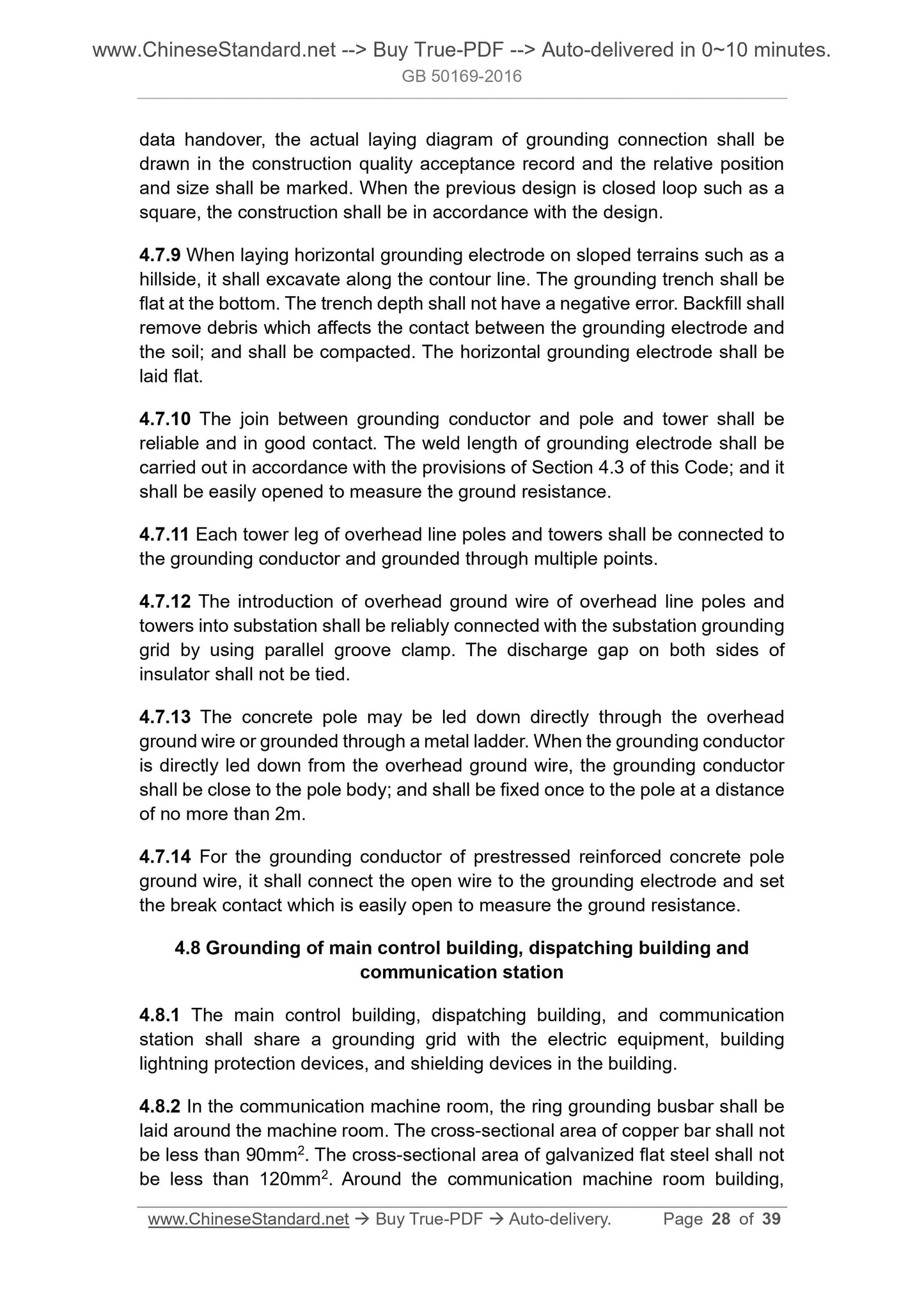1
/
of
12
www.ChineseStandard.us -- Field Test Asia Pte. Ltd.
GB 50169-2016 English PDF
GB 50169-2016 English PDF
Regular price
$165.00
Regular price
Sale price
$165.00
Unit price
/
per
Shipping calculated at checkout.
Couldn't load pickup availability
GB 50169-2016: Code for construction and acceptance of grounding connection electric equipment installation engineering
Delivery: 9 seconds. Download (and Email) true-PDF + Invoice.Get Quotation: Click GB 50169-2016 (Self-service in 1-minute)
Newer / historical versions: GB 50169-2016
Preview True-PDF
Scope
1.0.1 To ensure the construction quality of grounding connection electricequipment installation engineering, promote the improvement of technical level
of engineering construction, and to ensure the safe operation of grounding
connection, this Code is developed.
1.0.2 This Code is applicable to the construction and acceptance of grounding
connection electric equipment installation engineering, and not to the
construction and acceptance of high voltage DC power transmission grounding
electrode.
1.0.3 The construction and acceptance of grounding connection shall, in
addition to complying with this Code, comply with the current relevant national
standards.
Basic Data
| Standard ID | GB 50169-2016 (GB50169-2016) |
| Description (Translated English) | Code for construction and acceptance of grounding connection electric equipment installation engineering |
| Sector / Industry | National Standard |
| Classification of Chinese Standard | P63 |
| Classification of International Standard | 91.140.50 |
| Word Count Estimation | 61,632 |
| Date of Issue | 2016-08-18 |
| Date of Implementation | 2017-04-01 |
| Older Standard (superseded by this standard) | GB 50169-2006 |
| Quoted Standard | GB 50149; GB 15618; DL/T 380 |
| Regulation (derived from) | Ministry of Housing and Urban - Rural Development Notice No.1260 of 2016 |
| Issuing agency(ies) | Ministry of Housing and Urban-Rural Development of the People's Republic of China; General Administration of Quality Supervision, Inspection and Quarantine of the People's Republic of China |
| Summary | This standard is applicable to the construction and acceptance of the grounding device of the electrical installation project, and is not suitable for the construction and acceptance of the high voltage direct current transmission grounding pole. |
Share
